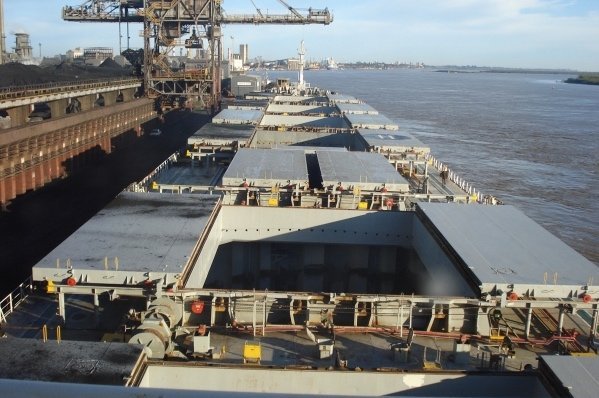
Australian miners are pushing freight transport in an autonomous direction. With driverless trucks already in operation and autonomous trains set to launch soon, attention is now turning to ships.
BHP Billiton has made clear it wants ships to follow other modes of transport in adopting autonomous technology.
“Safe and efficient autonomous vessels carrying BHP cargo, powered by BHP gas, is our vision for the future of dry bulk shipping,” BHP’s vice president of freight, Rashpal Bhatti, wrote in a posting on its website. He said that future could manifest within a decade.
Bhatti said BHP is seeking partners to work on technological changes in the sector.
Fellow miner Rio Tinto already uses a fleet of 76 driverless trucks and will fully deploy autonomous trains in Western Australia by the end of next year. Chris Salisbury, Rio Tinto’s top iron ore executive, spoke about shipping’s need for greater innovation at a conference in Perth last month.
Fortescue Metals Group, meanwhile, has taken on more than 50 autonomous trucks while also pioneering autonomous drilling at some of its mines in Australia.
The issue of autonomous ships is due to be discussed at the IMO today.

Not in this decade or beyond…
Autonomous transportation is nice if you can use equipment which has been overhauled overnight and if you can exchange such units on-the-fly, if one is not working.
The latter is not possible with ships:
Ship’s are – because of technical complexity – more like a power plant which needs continuous maintenance. Or do you know a autonomous power plant?
Furthermore there is no maintenance road along its path/track/route.
So, getting personnel there in order to fix something might be difficult.
Also the ship doesn’t stay there where autonomous equipment stops working. Strong winds can hinder boarding to help with the problem.
And where trucks and other autonomous equipment can be easily unloaded to continue with another unit to maintain production performance or output, ships cannot be unloaded easily, not at sea and considering an emergency port, its draught might be too big to enter or for using a dock… not to forget port and unloading/reloading costs.
All in all: If you can run around with personnel, autonomous is nice. If you have to go there by boat, it will take days… forget autonomous! Ships, cargoes and time are too valuable!
Not completely agree Peter B. out of an approximately 20-21 mandatory crew on a typical ocean going vessel, 6 to 9 are to do with watchkeeping. That can be automated. another 6 or so are for “deck maintenance and moorings etc”, this can be done away with and have mooring gangs board the vessels when they approach ports. typically there are 2-3 in the galley, can be reduced to 1. along with say 3-5 technicians for emergency breakdowns. so yes, you cannot completely automate ships, as perhaps u wont she pilotless planes anytime soon… drones r fine… at max u lose 4 hellfire missiles. but u bring the crew down from 21 to 5, you bring opex down from say 200k a month to say 50k a month or under 2 k a day…. that brings theoretically charter rates down to say 2-5 k per day…. bring it on I say.